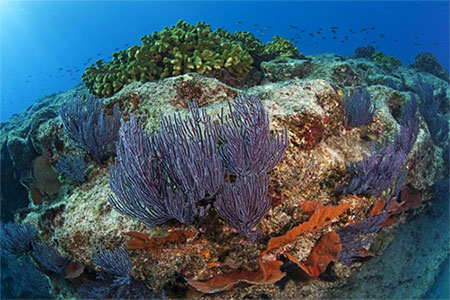
Conservation Efforts in the Sea of Cortez
The Sea of Cortez is the world’s youngest sea, having formed 5.6 million years ago. It is one of the most biologically diverse bodies of water on earth. Jacques Cousteau, the famed French diver and ocean explorer, called it the world’s aquarium. Rare and spectacular marine mammals breed and feed here, including the largest animal that has ever existed — the blue whale — and the smallest member of the marine cetacean family and one of the most endangered, the four-foot-long vaquita. Only 200 or so of these porpoises remain in the wild, all in the northern end of the Sea of Cortez. Nearly a thousand species of fish dwell here, and at least 5,000 invertebrate species — no one knows the true number.
Sadly, marine populations have declined between 70% and 90% since the 1960s, and, until now, nothing has been done to ensure that future generations will have fish in the sea. During the past two decades the Mexican government has created 11 marine protected areas in the Sea of Cortez. The intention was to promote sustainable fishing practices: gill nets and trawling are banned, and a few small areas have been designated as no-take zones, where fishing is completely prohibited, at least in theory. In practice, the laws are largely ignored as funding is lacking for enforcement.
Organizations such as SeaWatch and the efforts of local fishing communities are making a difference.
- SeaWatch
- ROC
- Espíritu Santo es Parte de Ti (Espiritu Santo is Part of You)
- Cabo Pulmo Reef
- Whale Shark Mexico
Check out this recent National Geographic article on conservation efforts in Baja.
Archipelago Espiritu Santo National Park just had it’s 10th anniversary and the recovery of fisheries is evident and measurable due to the reduction of illegal fishing around the islands. This success is a result of the involvement of user groups, the citizens of La Paz, and ROCs vigilance and coordination with committed federal authorities.
This is an excellent article "A Glimmer of Hope - Baja Reef Conservation" on SeaWatch, their involvement in the creation of an artificial reef off Espiritu Santo and their efforts towards the recovery of the fish populations Sea of Cortez.
Cabo Pulmo National Park, the flagship of Mexico's marine conservation efforts is recognized around the world as a success story and a model for marine species and habitat conservation.
